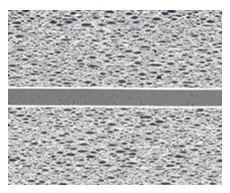Mechanical Decoupling in High-Temperature Superconducting Tapes
The present invention describes a structure and method for creating and insulating high-temperature superconductor tapes that electrically insulates the conductors while mechanically decoupling them from the much stronger encapsulant. The concept of the invention is to use a conductor insulation which not only electrically insulates the conductors of the coil windings from each other, but also mechanically insulates them from the much stronger encapsulant. The insulation material mechanically decouples the conductor from the encapsulant at the boundary between them, thereby preventing damage as a result of thermal and electromagnetic shearing forces. The proposed structure allows the encapsulant to continue performing its functions of preventing coarse motion and stabilizing the coil as a whole, while allowing fine relative displacements of individual coil windings caused by radial stress gradients.
This invention is counter-intuitive and new because during normal manufacture of a magnet, conductor insulation and encapsulant are expected to completely immobilize incorporated conductors to prevent damage of the conductors during cooling and energization due to thermal and electromagnetic tensile and shear stresses. Such stresses and damage, however, are the consequences of this expectation. Because shrinkage and not adhesion is the functional basis of the identified and incorporated thin-walled heat-shrink tubing, thermal and electromagnetic tensile and shear stresses are minimized at the boundary between the conductors and the encapsulant. This allows the use of a strong encapsulant, such as epoxy, which would otherwise be disallowed.


